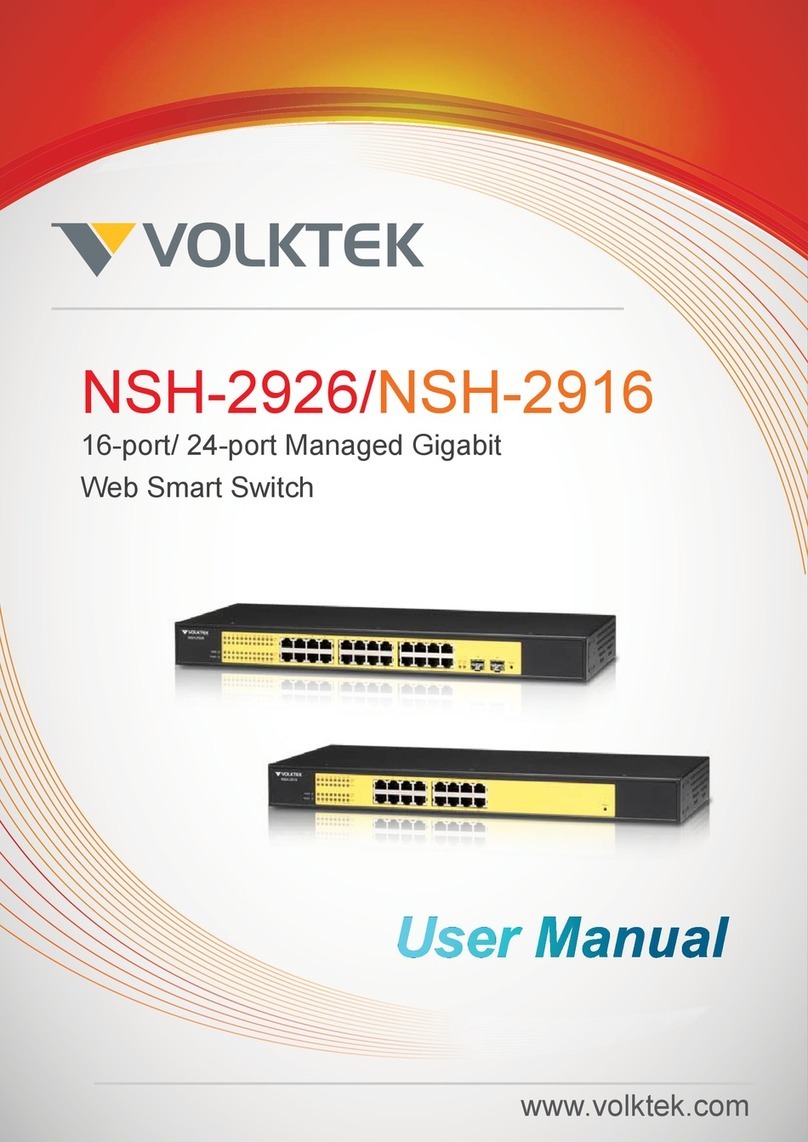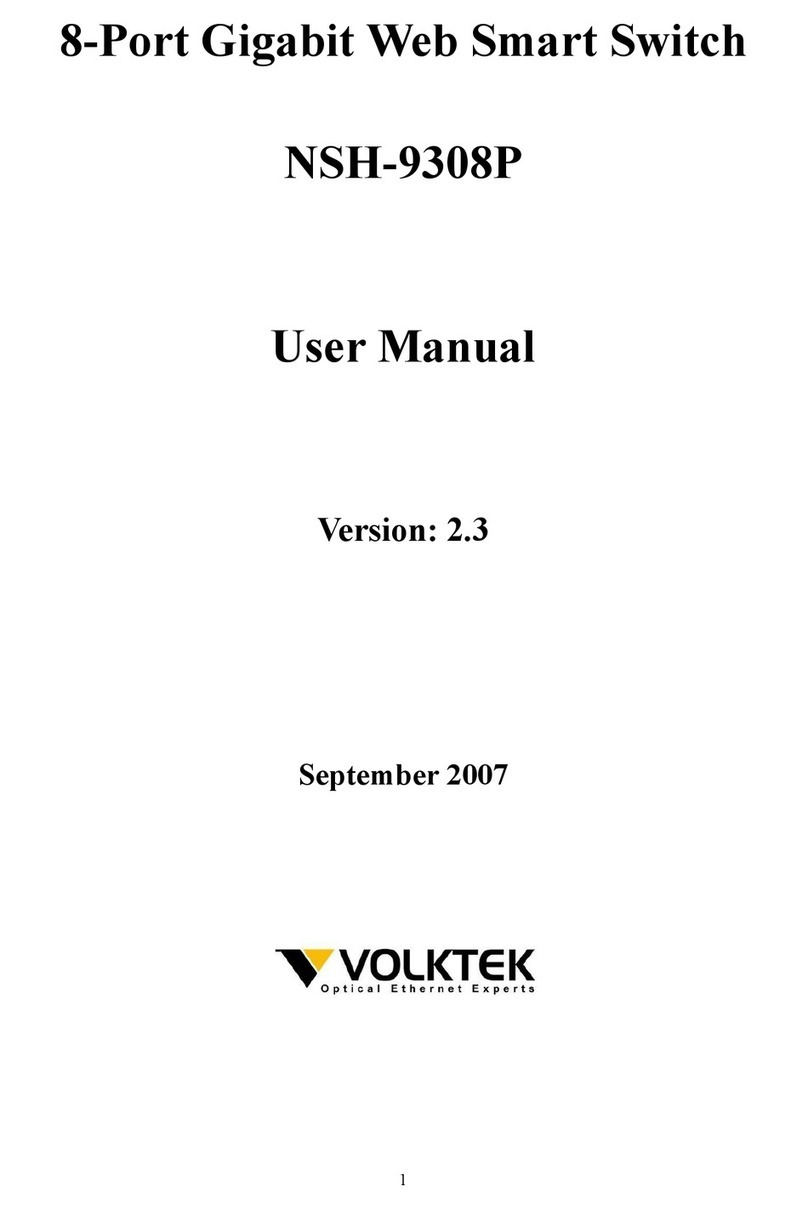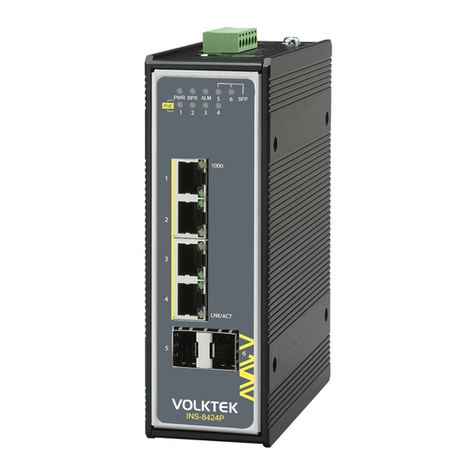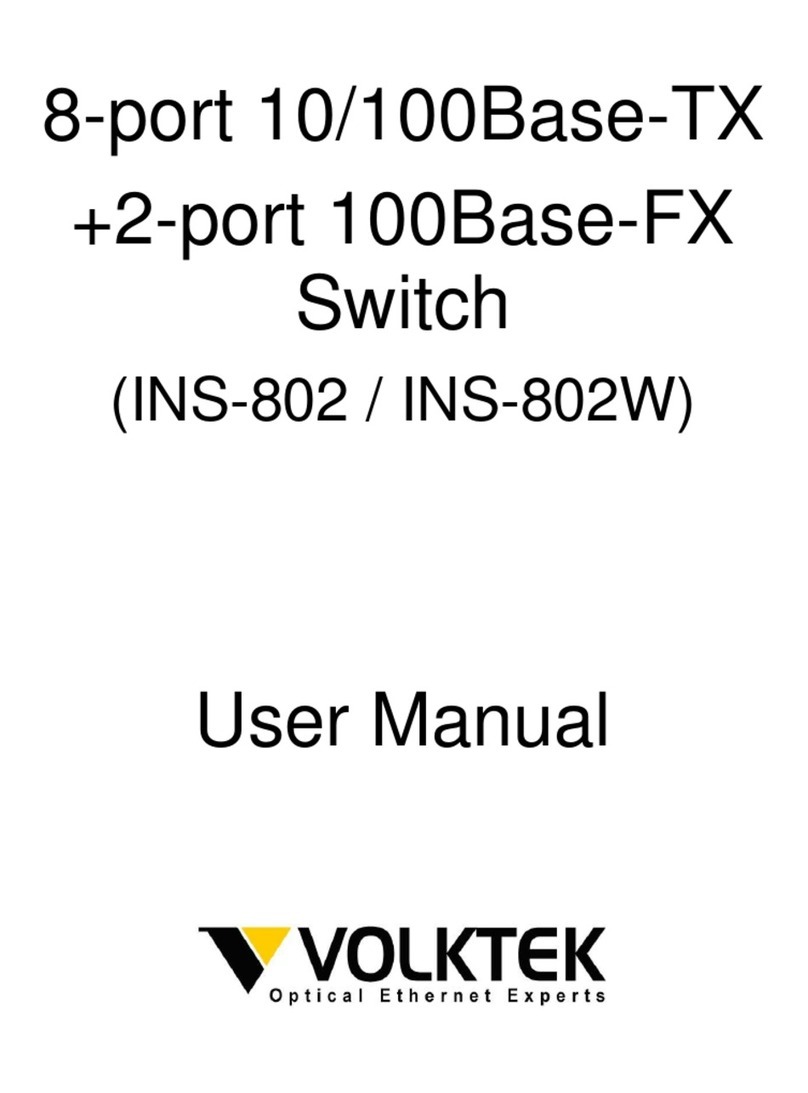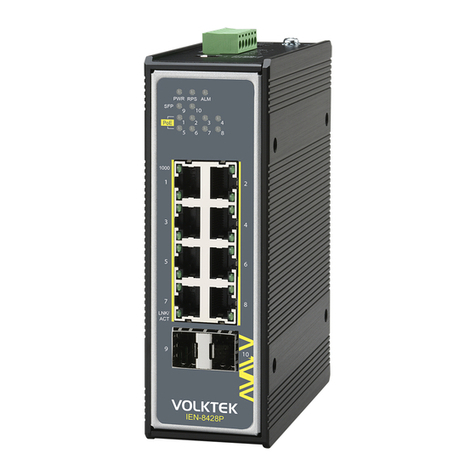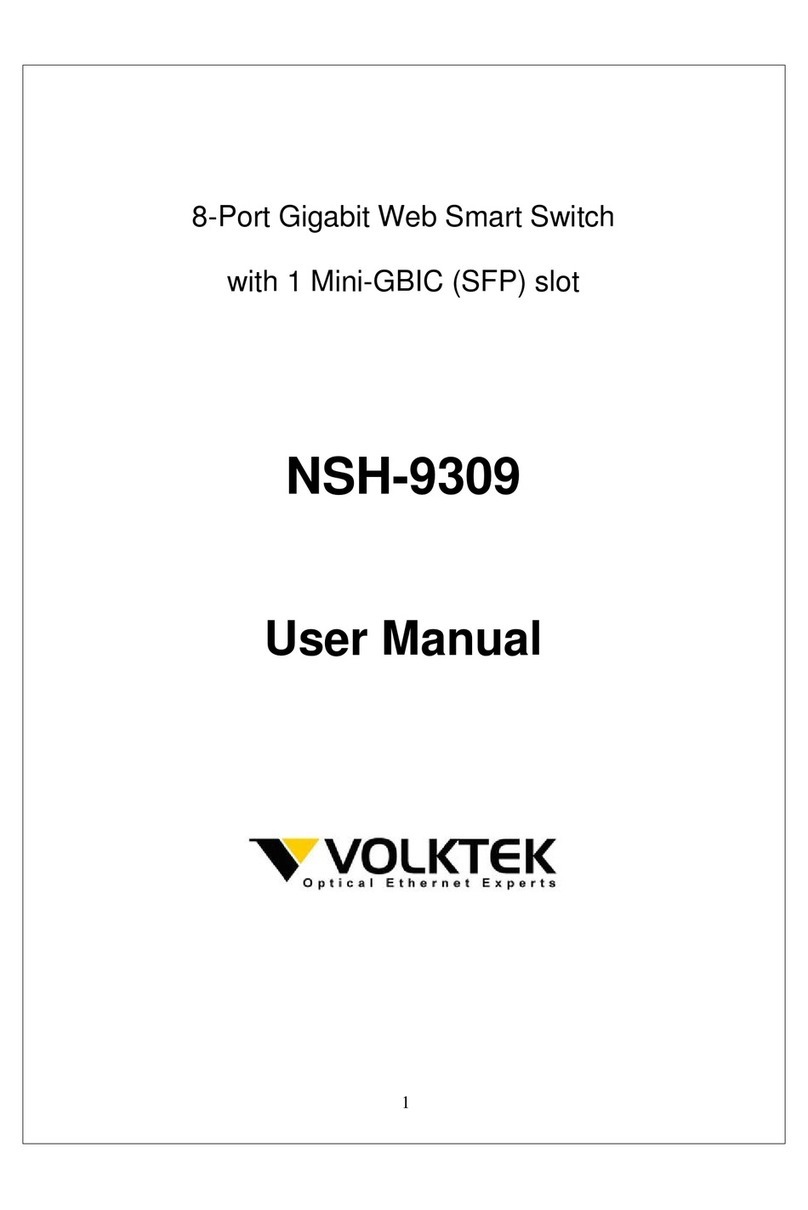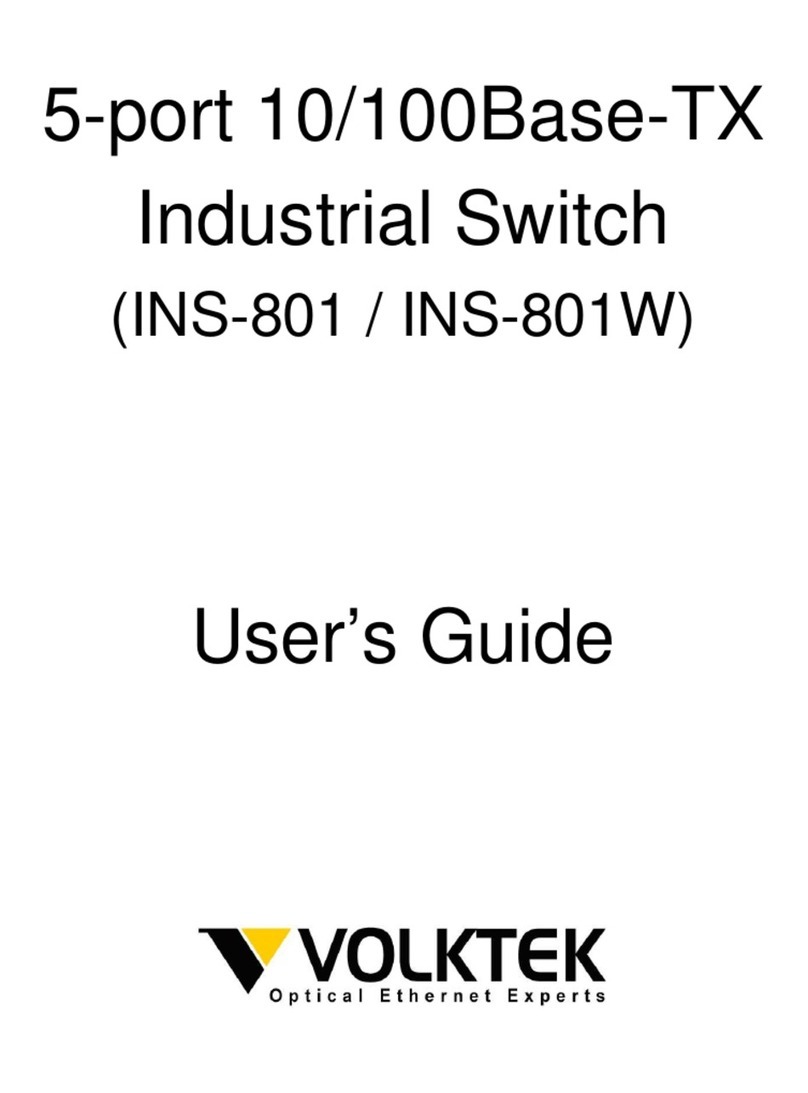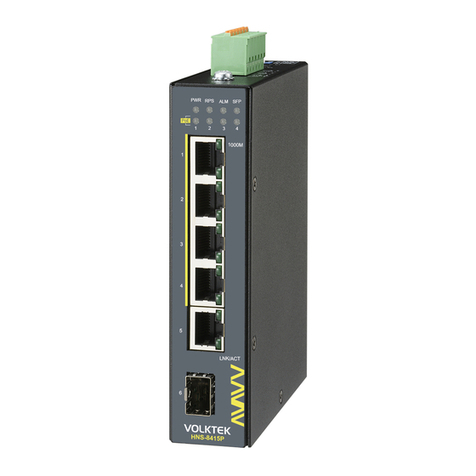
VOLKTEK NSH-5632 MANAGED 24-SLOT 100BASE-TX/FX SFP + 4 G COMBO L3 SWITCH
3
7WEB MANAGEMENT ......................................................................23
7.1 Log into Web Management............................................................................23
7.1.1 Standard GUI buttons......................................................................................................24
7.2 System.............................................................................................................24
7.2.1 Management.....................................................................................................................24
7.2.2 IP Setup.............................................................................................................................25
7.2.3 Reboot...............................................................................................................................26
7.2.4 Firmware Upgrade...........................................................................................................26
7.3 Physical Interface ...........................................................................................27
7.3.1 Port Status........................................................................................................................27
7.4 lP Interface ......................................................................................................28
7.5 Router Reports................................................................................................29
7.6 Routing............................................................................................................30
7.6.1 Static Route......................................................................................................................30
7.6.2 RIP.....................................................................................................................................31
7.6.3 OSPF .................................................................................................................................33
7.6.4 Multicast Route................................................................................................................36
7.6.5 VRRP.................................................................................................................................39
7.7 Bridge ..............................................................................................................40
7.7.1 Spanning Tree..................................................................................................................40
7.7.2 Link Aggregation Static ..................................................................................................45
7.7.3 LACP.................................................................................................................................46
7.7.4 Mirroring...........................................................................................................................50
7.7.5 Static Multicast ................................................................................................................50
7.7.6 IGMP Snooping................................................................................................................51
7.7.7 Traffic Control..................................................................................................................53
7.7.8 Dynamic Addresses ........................................................................................................53
7.7.9 Static Addresses..............................................................................................................54
7.7.10 VLAN Configuration ......................................................................................................55
7.7.11 GVRP...............................................................................................................................56
7.7.12 QoS/CoS .........................................................................................................................58
7.8 SNMP ...............................................................................................................60
7.8.1 Host Table.........................................................................................................................60
7.8.2 Trap Setting......................................................................................................................61
7.8.3 SNMPv3 VGU Table .........................................................................................................62
7.9 ACL ..................................................................................................................64
7.9.1 Set Access Control List ..................................................................................................64
7.9.2 Apply Access Control List..............................................................................................66
7.9.3 Content Aware .................................................................................................................67
7.10 Security..........................................................................................................68
7.10.1 Port Access Control......................................................................................................68
7.10.2 Dial-in User.....................................................................................................................70
7.10.3 RADIUS...........................................................................................................................70
7.11 Traffic Chart ..................................................................................................71
7.11.1 Traffic Comparison Chart .............................................................................................71
7.11.2 Group Chart....................................................................................................................72
7.11.3 History Chart..................................................................................................................73
7.12 Save Configuration.......................................................................................73
8COMMAND LINE INTERFACE........................................................74
8.1 Power On.........................................................................................................74
8.1.1 Boot ROM command mode.............................................................................................74
8.1.2 Boot ROM Commands.....................................................................................................74
